|
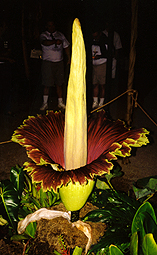
|
Tiffy in full flower. Odor is very strong at this point
(about 2130 on 13 June 2000. Photo by Leo Song.
(click on image for larger picture)
|
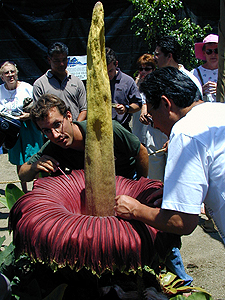
|
Pollination of Tiffy by Leo Song (L) and Chris Barnhill
using pollen from the Huntington Botanical Garden which had
been frozen from last year's inflorescence. Note that the
spathe has wilted due to the strong sun and heat. Photo by
Marybeth Song. Click on image for larger shot.
|
|
|
Tiffy on the day after pollination. The spathe had
folded up overnight and the spadix had partially recovered
from its partial collapse in the late afternoon of 14
June. |
|
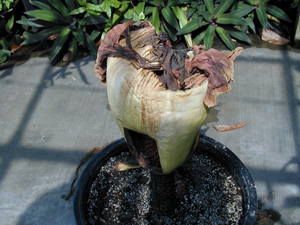
|
Tiffy@home (CSUF Biology Greenhouse Complex). The spathe and spadix have mostly dried up.
Note the observation window in the lower left portion of the
base.
|
|
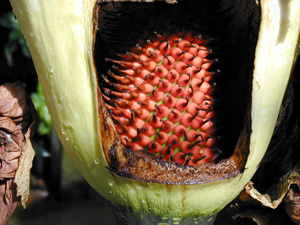
|
Here is a close-up of the window that was cut to observe
the female flowers' development following pollination.
|
|
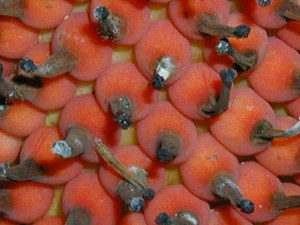
|
Close up view of the inside showing female flowers. Note
that the stigmas have died. |
|
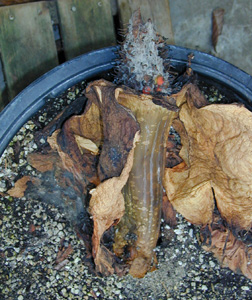
|
Bad news! The pollination was not successful. Either the
pollen was not good and/or it was too late when the pollen
was applied. The base of the spathe had been removed to
prevent mold. Note that the base of the inflorescence
continues to die and now is quite soft. |
|
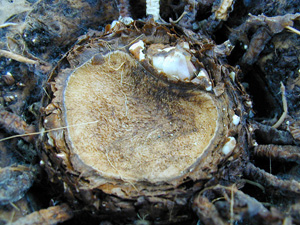
|
After the inflorescence had completely disentigrated,
the tuber was removed from the pot and the soil washed off.
Here, the large "D" shaped area was where the inflorescence
was connected to the tuber proper. The small white
triangular area at "One o'clock" is a new probable leaf bud.
Two flowers in a row would exhaust the tuber. |
|
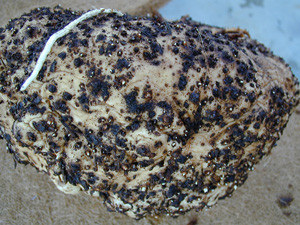
|
Close-up view of the surface of the tuber. Note the
numerous small buds or "eyes" that provide a point of growth
enabling the tuber to increase greatly in size. Note that
eyes cover most of the surface area. These auxillary buds
can be a source of new main growing points if the main bud
is damaged. Another tuber (#3) given to the collection at a
later time was from a tuber that had been cut up into
sections. At this time, the tuber was about 12 inches in
diameter and weighed about 17.5 pounds. |
|
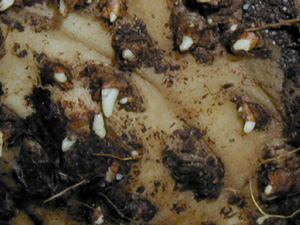
|
Extreme closeup showing "eyes" or areas of
meristematic activity. Some of these areas produce
roots. |
|
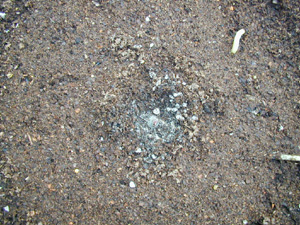
|
Tiffy was replanted into a larger pot and has begun
to show signs of activity (28 August 2000) with a root
emerging at the surface. A new leaf will appear in a few
weeks. Tip of leaf bud visible in lighter area in center.
Roots are the white "worms." Taffy (#2) was also replanted
into a larger pot, but shows no signs of activity as of 06
October 2000. |
|
|
|